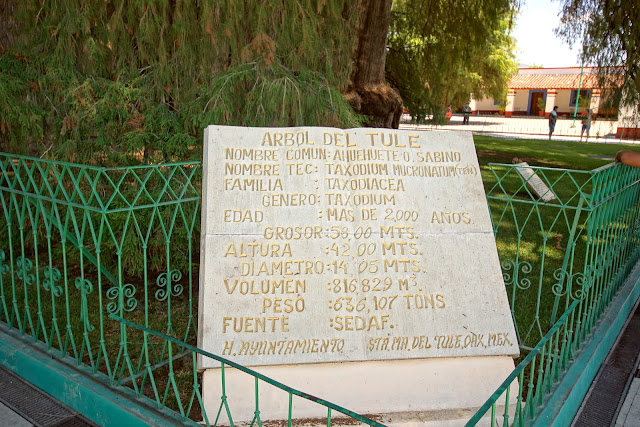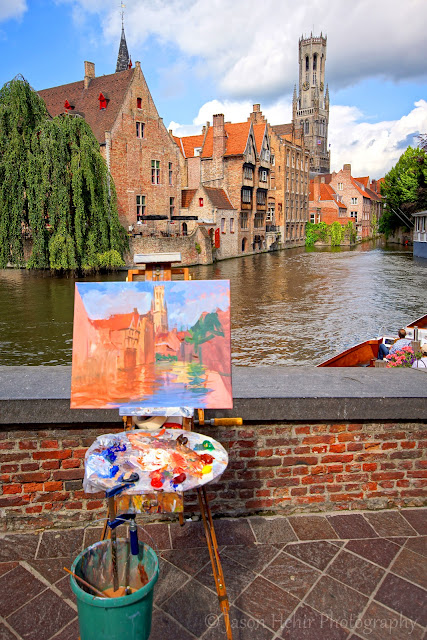I know what you're thinking. It's a big tree, but, I've seen bigger. Well, you're right in a sense; you've almost certainly seen taller but as most women will tell you it's girth that really counts and the locals of the small town of Santa Maria del Tule certainly wouldn't disagree. This is, apparently, the tree with the largest trunk circumference in the world but having said that there are a few things to bear in mind.
1. Any fact that contains the word "apparently" is likely to not be a fact.
2. Small towns in the middle of no where all over the world make claims about having the biggest Something Or Other; this is normally because there is bugger all else going on in town.
3. It's possible that this is actually 2-3 trees that have sort of morphed into one space.
So, bearing all that in mind, let's take a closer look....
So, as you can see, this is a weird looking tree, it's a sort of Joseph Merrick of the tree world. It looks like about twenty trees that have been crudely glued together but, in fairness, it actually is all one organism; DNA tests have proven this, but this doesn't rule out the possibility of one tree having multiple trunks. Where the real controversy lies is how you measure a tree's girth. Do you just walk around the tree with a tape, pull it tight and see what you get or do you tuck the tape into all the nooks and crannies? Or should it actually be based on diameter? In any case, most independent observers seem to agree that it is indeed larger than its nearest competitor, a sequoia.
At the base of this tree can be found this plaque with the vital stats, most of which are wrong. The height is nearer 35 metres and the age is closer to 1,500 years, still very impressive though. The tree is in the churchyard of the small town which is about 9km down the road to Mitla east out of Oaxaca in central Mexico. Sadly, all is not well; the tree is dying. A rapid increase in the local population has severely affected the water table and a busy highway just a few hundred yards away is polluting the air. John Paddock, a US archaeologist specialising in the history of the region has warned local government that if drastic action isn't taken the tree could be dead within fifty years. A sad end to a long life.








